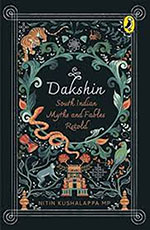Since the emergence of Folklore Studies in the nineteenth century, the study of folklore grew exponentially in the twentieth century and continues to thrive through academic as well as popular literature in the twenty-first century. In the context of India, there is a sizeable market for books dealing with oral traditions as in recent years, many major and minor publishing houses have brought out several collections, indicating not only that there is a healthy appetite for the consumption of such books in the market but also the continued relevance of folklore in the everyday lives of people. In its various guises, ranging from songs, proverbs, tales, jokes, lullabies, epic-length narratives in prose and verse to dances, games, toys, and performing arts like street magic and theatre, folklore permeates ‘every aspect of Indian life, in city, village and small town’ (‘Tell it to the Walls’ p. 463). The title under review draws upon the rich folkloric heritage of India to retell an array of fascinating tales.
Nitin Kushalappa MP by profession is a software developer, but his interest in history (especially that of Coorg), mythology, and translation has resulted in seven books. The governing principle of selection in the book under review has been to show ‘the vibrancy of the folklore, myths and legends of the Deccan region of India’ (p. xiii). It provides an interesting slice of folktales from south Indian languages including Kodava, Kannada, Tamil, Badaga, Malayalam, and Telugu. In addition, the selection also features retellings from Nadikerianda Chinnappa’s collection of Kodava folk songs, Pattole Palame (1924)which was translated for the first time in English in 2003.
Each retelling is prefaced by a brief introduction, wherein the author contextualizes the tale and points out little-known facts and makes sure that the target readers, i.e., children aged 9 and above, do not miss the didactic angle of the story.
In view of this, Kushalappa concludes each retelling with a moral instruction, centred on patience, greed, truthfulness, hard work, and righteousness among others. In addition to capturing the key moments in the story, the well-detailed illustrations come in handy in visualizing the mood and dramatic tension of the narrative. Moreover, the author employs a ‘Did you know?’ motif that serves to pique the curiosity of readers and provides interesting information. For example, in ‘The Tale of the Miser’ the author writes: ‘Did you know that the legend of Moosay Kaka the miser was passed down from one generation to the next for 100 years?’ (p. 161); it also acts as a bridge connecting the past with the present or rather finding the traces of the past in contemporary culture; for instance, the author writes towards the end of ‘The Moon Prince’: ‘Did you know that even today Kodava men carry an ornate sheathed knife with them during various festivals and ceremonies? Often made of silver, although in the past the handle and sheath were made of wood, leather or other material, this knife is called the piche kaththi. Even now, the piche kaththi of the Kodavas bears the mark of a crescent moon, to signify the moon prince of the lunar dynasty’ (p. 220).
The tone, pace, and style of narration come together to bring out a delightful reading experience. While reading the book, children will also encounter a few games that were played in the past. It would be exciting for young as well as adult readers to acquaint themselves with games like Hillata described in ‘The Tale of the Good Boy’ and the games of Tar and Chend Kutti in ‘The Seven Fairy Princesses’.
Though each tale in the collection is unique and engrossing, what I enjoyed the most was ‘The Tale of the Last Sun’. The author points out that this ‘story was originally told by the Mundas of Odisha’s Mayurbhanj district, and it was collected and translated by folklorist and author Dr. Mahendra Kumar Mishra (p. 149). In the story we are told that there were seven suns in the beginning of the world. Due to this, the earth was exceptionally hot. So, one day the seven Munda brothers decided to cool down the world. They ‘shot down six of the glowing suns!’ ‘Seeing this, the last sun felt fear in its fiery heart’ (p. 150) and fled to take refuge behind a huge mountain. Consequently, the earth was engulfed in darkness, and everything came to a halt. With such a premise, the story is about how animals convene an emergency meeting to resolve the issue. When tiger, elephant, peacock, jackal, and hare fail in their attempt to bring back the last sun, a cock crows ‘KOK-AREY-KOOOOOOOOOOOOOO’ (p. 155) and succeeds!
In this fascinating collection, Kushalappa’s skillful narration keeps the reader anticipating the next twist and provides ample occasion to relish the world of folklore. The author, however, does not attempt to tease out differences between fables, myths, and folktales. A note toward this end in the introduction would have added clarity to these seemingly interchangeable terms for the young readers. As AK Ramanujan rightly said, a folktale is a ‘travelling metaphor that finds a new meaning with each new telling’ (‘Preface’, p. xi). Kushalappa’s retelling is certainly bound to inspire readers to find new horizons of meaning.
Works cited:
Ramanujan, A.K. ‘Tell it to the Walls: On Folktales in Indian Culture’. The Collected Essays of A.K. Ramanujan, edited by Vinay Dharwadker, OUP, 1999, pp. 463-484.
Ramanujan, A.K. ‘Preface’. Folktales from India: A Selection of Oral Tales from Twenty-two Languages, selected and edited by A.K. Ramanujan, Penguin Books, 1991, pp. xi-xii.

